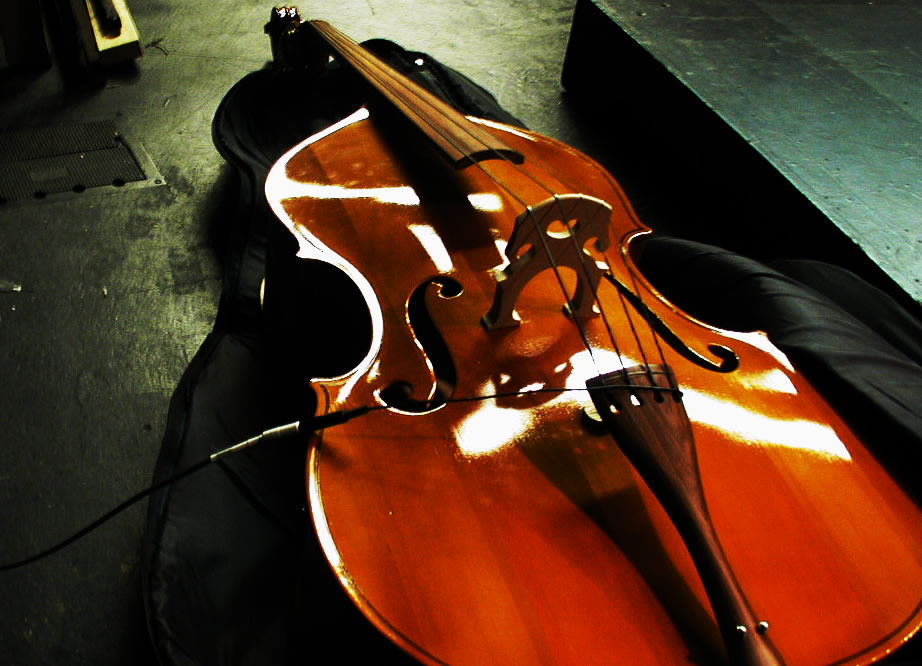 Date: April 17, 2009
Date: April 17, 2009Location: Crowell Concert Hall, Center for the Arts, Wesleyan University, Middletown, CT
Performed by: Lucy Strother, cellist
It was nice returning to Wesleyan's Crowell Concert Hall, one of several unremarkable concrete buildings that comprise the university's Center for the Arts. It had been several years since the last time I attended a performance there, seeing faculty member and famed jazzer Anthony Braxton perform with a small ensemble of his graduate students.
Also among the faculty at Wesleyan is Alvin Lucier, a noted experimental composer. Lucier is well-known for his explorations of the physical properties of sound, and most of his work involves investigations into varied acoustic phenomena, including the resonance of performance spaces and natural reverb, the interactions of closely-tuned pitches, and phenomena involving auditory perception. And so it was, with a brief, soft-spoken introduction by Lucier himself, that his 30-minute piece Glacier was performed by Wesleyan student Lucy Strother.
A single sheet handed out at the door read as follows:
"During the course of a half hour performance of Glacier, a cellist slowly sweeps downward, tracking a graph of the mean mass balance of 30 glaciers over a 24-year period, from 1980 to 2004. Glacier was commissioned by Feet to the Fire, Exploring Global Climate Changes from Science to Art and was written for Lucy Strother."Lucier implored the audience to listen very closely, reiterating that the piece was very slow and straight-forward, and that at various points during the descent of the pitches, certain subtle acoustic phenomena could be heard as the notes resonated within the performance space and the cello itself. Strother began slowly bowing an E on the cello's A string, drawing the full length of the bow across the string and again pushing back in a painstakingly slow, precisely controlled rate, sending a reedy, insectile drone into the concert hall, punctuated only by the changes in the direction she bowed, like brief pauses between deep in- and exhalations. Over the next 30 minutes, Strother would almost imperceptibly move her fingering down the strings, bringing the pulsing drone down not just through the chromatic notes but also touching upon many pitches in between. Upon reaching the open note on a string, Strother would deftly switch between the open string to the fingered note on the next lowest string. She continued in this fashion until she ended on the cello's low C.
And subtle the phenomena were. The slow descent was at times almost trance-inducing, the long notes wavering ever-so-slightly due to uncontrollable changes in the pressure with which Strother bowed. A few times she would find a note that was discretely doubled by the room, a higher-pitched tone riding with the deeper tone of the bowed note, producing an effect kind of like the ringing trail-off of electric guitar feedback. This was particularly noticeable as Strother bowed the open note on the G string, as the extra ringing tone immediately vanished as she shifted to a fingered G on the C string. At several points, though admittedly very briefly, I experienced what seemed to be an additional Tartini tone produced within my ear, though I'm not sure what accounted for the differing tones I would have to have heard if it was in fact a Tartini effect I was experiencing.
In the end, it was a pleasurable, hypnotic performance, though many audience members were noticeably fidgety by its end and a few rudely left in the middle. A few words must be said of Strother's impressive showing. Glacier is deceptively simple, and though the actual musical elements involved are basic, the stamina and concentration required on Strother's part to complete the piece was impressive. Maintaining the appropriate posture, bowing speed, and pressure must have been extremely difficult. Both taking and exiting the stage, Strother was smiling, almost bashful. During the performance, her face began to contort in concentration, and at times she almost looked pained, as though with the slow descent of the cello she was also descending into some dark, unspeakable subterranean depths. It's unfortunate that some of the more impatient audience members probably aren't in a position to appreciate just what it takes to perform what they find so boring. For those who took Lucier's advice and did indeed listen closely, boredom was an alien concept for that brief half hour.

Other Resources:
Alvin Lucier wikipedia entry
Alvin Lucier's website
Wesleyan University's Center for the Arts




